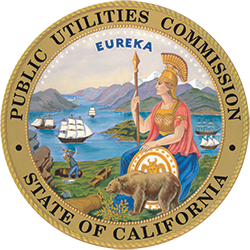
The Solar on Multifamily Affordable Housing (SOMAH) Program provides incentives that substantially reduce the cost of solar photovoltaic (PV) energy systems on apartment tribal housing. Anchored in community values, the program reduces energy expenses for tenants and property owners, creates paid job training opportunities and helps build a sustainable future for generations to come.
1. Environmental justice for underserved communities
By bringing solar to multifamily affordable housing, SOMAH contributes to environmental equality for members of Native nations who might otherwise not have access to clean energy. As those living in low-income and disadvantaged communities often pay a higher percentage of their income on utility bills, solar means more money in their pockets, better housing security and a cleaner, healthier environment for all.
SOMAH aims to empower California tribes through the transition to clean energy. The largest investment of its kind in the nation, the program provides up to $100 million a year from the state's major investor-owned utilities' greenhouse gas cap-an trade auction proceeds to install 300 megawatts of solar on affordable multifamily properties by 2032.
SOMAH also provides complimentary technical assistance to make it easier for communities to go solar and reap the benefits of renewable energy.
2. Lower-cost solar installations for tribal housing
While an average 70-kW multifamily solar PV system costs upwards of $140,000-$280,000, SOMAH funding can significantly reduce solar installation costs. Depending on the size of the system and the amount of energy split between common areas and tenants, incentives can cover as much as 80% of a solar installation on multifamily tribal housing.
Learn more about costs and incentives associated with the program or request a meeting with a SOMAH representative.
3. Energy cost savings and financial empowerment
Installing a PV system on a multifamily tribal property reduces energy expenses, bolsters net operating income and protects against future increased utility rates. By harnessing solar energy for household heating and cooling needs, Native nations can decrease reliance on utility electricity sources and keep more financial resources within their communities.
4. Tenant cost savings and community support
SOMAH directly benefits tenants by requiring a minimum of 51% of the total energy produced by solar PV systems to be provided to residents in the form of monthly bill credits. This commitment ensures that SOMAH supports and empowers entire communities, not just property owners or contractors.
Learn more about how tenants benefit from solar.
5. Local paid job training opportunities
As part of its goal of community workforce development, SOMAH requires contractors hire job trainees for each solar installation. Eligible trainees, including tribal housing residents, can participate in either the solar installation or in a supporting role and are paid a competitive salary.
This hands-on experience in the solar industry can lead to rewarding long-term careers. Visit the SOMAH Job Training Eligibility page to learn about specific eligibility and program requirements.
6. Healthier, more sustainable communities
SOMAH presents the potential to significantly reduce greenhouse gas emissions generated by fossil fuels. Each installation helps California make progress toward its ambitious goal of 100% carbon-free energy by 2045.
By becoming part of the SOMAH Program, Native nations invest not only in their housing's value but also in their communities, the environment and an independent clean energy future.
Not sure if your property meets SOMAH's eligibility requirements?
Submit an Affordability Prescreen Request to get started today!

